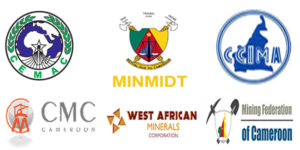Understanding the Cost of CEMAC Permits: Year and Location Factors
Navigating international trade within Central Africa requires a clear understanding of CEMAC (Economic and Monetary Community of Central Africa) permits. These permits are essential for legally importing and exporting goods across CEMAC member states, including Cameroon, the Central African Republic, Chad, Republic of Congo, Gabon, Equatorial Guinea, and São Tomé and Príncipe.
The cost of CEMAC permits can fluctuate based on multiple factors, notably the year of issuance and the location of purchase. This guide breaks down these elements to help businesses better manage expenses and ensure compliance.
1. Year of Issuance
CEMAC permit fees are not fixed and can vary yearly due to:
- Economic Changes: Inflation, currency fluctuations, and economic policy shifts can impact fees. For example, permits issued during high inflation years may be more expensive than during stable periods.
- Regulatory Adjustments: Changes in CEMAC regulations may lead to fee increases to cover administrative costs or new compliance requirements.
- Administrative Costs: Rising administrative or processing costs over time can contribute to higher permit fees.
Staying updated on regulatory changes is crucial to plan permit-related expenses effectively.
2. Location of Purchase
Where you acquire your CEMAC permit can significantly affect the cost:
- Local vs. Regional Offices: Permits bought from local offices may differ in cost from those issued by regional or central administrative bodies.
- Administrative Fees: Each CEMAC member state has unique fee structures influenced by local economic conditions.
- Service Charges: Some countries require intermediaries or agents to facilitate permit issuance, adding extra costs.
3. Additional Considerations
- Processing Time: Expedited permits may incur additional fees depending on the urgency and location.
- Documentation Requirements: More complex documentation or certifications can increase overall costs.
- Economic Context: Regional economic shifts, trade agreements, or new tariffs can affect permit fees.
Estimated Cost of the CEMAC Gold Buyer’s Permit
Here’s an overview of typical costs for acquiring a CEMAC Gold Buyer’s Permit:
| Expense Type | Estimated Cost (XAF) | Estimated Cost (USD) |
|---|---|---|
| Application Fee | 100,000 – 500,000 | 170 – 850 |
| Permit Fee | 1,000,000 – 3,000,000 | 1,700 – 5,100 |
| Renewal Fee | 500,000 – 1,500,000 | 850 – 2,550 |
| Security Bond | 2,000,000 – 5,000,000 | 3,400 – 8,500 |
| Legal & Consultancy Fees | 500,000 – 1,000,000 | 850 – 1,700 |
| Total Estimated Cost | 4,100,000 – 11,000,000 | 7,000 – 18,700 |
Note: Additional costs may include document translation, transportation, or logistics if physical submissions are required.
4. Where to Apply and Learn More
For businesses aiming to trade gold, diamonds, or other precious commodities legally:
- CEMAC Buyer’s Permit Resources:
- Cameroon Ministry of Mines and Mining Permits:
5. Buy Gold and Precious Metals from Trusted African Suppliers
If you plan to trade gold or precious stones, consider sourcing from verified suppliers like Bonasgold, which offers a full range of products with proper documentation:
- Gold Dore Bars from Cameroon
- Gold Dust from Cameroon
- Gold Nuggets from Cameroon
- Refined Gold Bars
- Rough Diamonds Ethically Sourced
- Certified Rubies
- Silver Bars
Additional Guides for Buyers:
- How to Buy Gold from Africa to Dubai
- How to Buy Gold from Africa to the UK
- How to Buy Gold from Africa to Australia
These guides help ensure your transactions are legal, safe, and compliant with CEMAC regulations.
Conclusion
Understanding the factors affecting the cost of CEMAC permits—including the year of issuance, location of purchase, and other variables—is crucial for any business engaging in Central African trade. Proper planning, using verified resources, and partnering with trusted suppliers like Bonasgold can reduce risks and ensure compliance, saving time, money, and legal complications.
Stay informed, plan carefully, and use official channels to secure your CEMAC permits and access premium African gold and gemstones safely.







